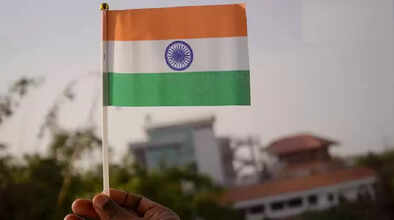How many designs were prepared before the tricolor was made? know who hoisted it first?

The tricolor will be hoisted across the country on the occasion of Independence Day. But do you know who made the tricolor first and what stages did it go through before it was finalized?
India's national flag, the tricolor, is a symbol of our country's pride. Every Indian's chest swells with pride seeing the tricolor fluttering proudly in the air. On the special occasion of 15 August 2025 i.e. Independence Day, the tricolor will become a symbol of the country's pride, but do you know how many designs today's tricolor went through before it came to its final form and who prepared it first? Let us know about the historical journey of the national flag of India.
The story of the design of the tricolor
The Indian national flag, i.e. the tricolor, had to go through many changes before coming to its current form. Between 1904 and 1947, at least 7 major designs of the tricolor were prepared and then in 1947 India got its national flag which is currently a symbol of the country's pride and glory. Let us know about those designs.
Who prepared the tricolor
In 1904, the first flag was designed by Sister Nivedita. In the year 1906, the national flag of India was hoisted for the first time in Parsi Bagan Square, Kolkata during the Swadeshi and Boycott Movement. 'Vande Mataram' was written in Hindi on the yellow strip in the middle. It had eight lotus flowers in the green strip at the top and the sun and moon in the red strip below. In 1907, Bhikaji Cama hoisted the second flag with his revolutionary comrades in Paris. It was similar to the first tricolor, in which seven stars were shown as Saptarishi. In 1917, the third flag of India was hoisted by Annie Besant and Bal Gangadhar Tilak during the Home Rule Movement. This flag showed seven stars with five red horizontal stripes. In 1921, Pingali Venkaiah made the fourth flag which he handed over to Mahatma Gandhi. White, green and red colors were used in this flag and the spinning wheel was also shown. Exactly 10 years later, i.e. in 1931, some changes were made in the flag of Pingali Venkaiah. In which only the red color was changed to saffron. After this comes the month of July 1947, this was the time when the flag of Pingali Venkaiah was adopted by the Indian Constituent Assembly as the national flag of independent India. In which Ashok Chakra was included in place of the spinning wheel.
Know about the tricolor
The saffron color in the Indian flag represents power. At the same time, white represents peace, while green color shows greenery and prosperity. The Ashok Chakra made in the middle of the tricolor is a symbol of the continuous dynamism of life.

